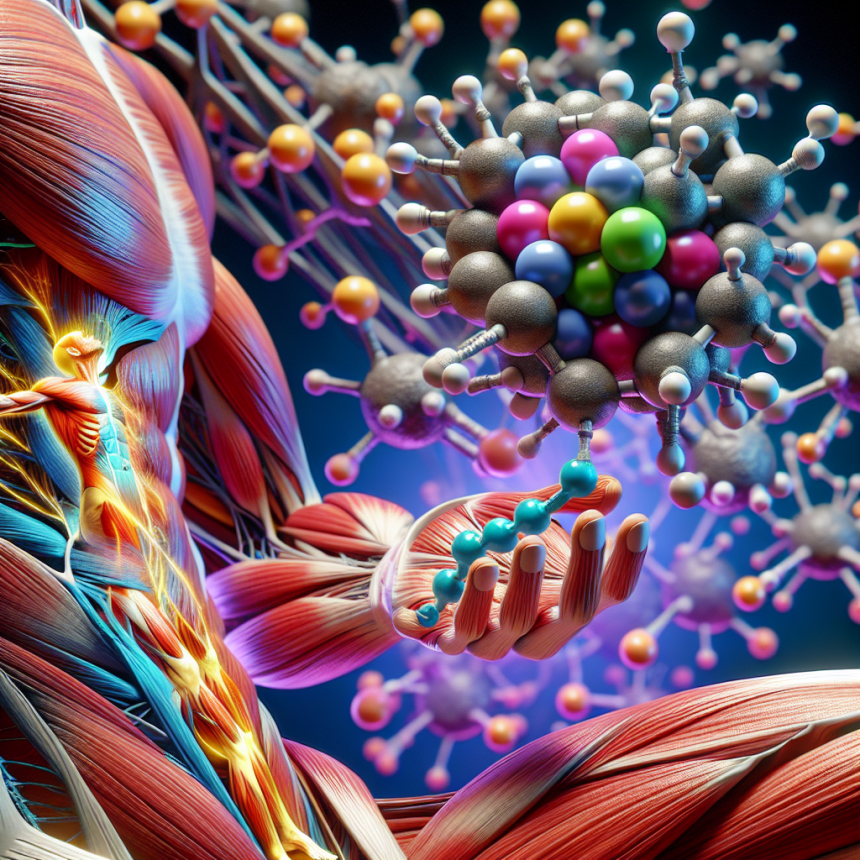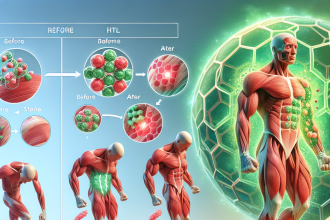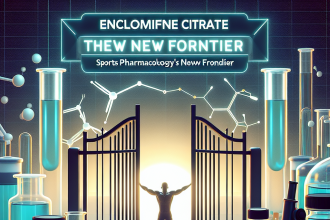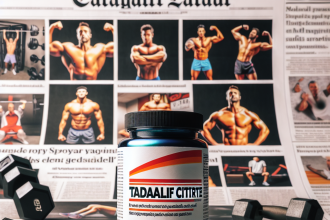-
Table of Contents
Liraglutide’s Influence on Post-Training Muscle Recovery
In the world of sports, recovery is just as important as training. Athletes push their bodies to the limit, causing muscle damage and fatigue. Proper recovery allows for muscle repair and growth, leading to improved performance. While there are various methods and supplements used for post-training recovery, one substance that has gained attention in recent years is liraglutide.
The Role of Liraglutide in Sports Pharmacology
Liraglutide is a glucagon-like peptide-1 (GLP-1) receptor agonist, commonly used for the treatment of type 2 diabetes. However, its potential benefits in sports pharmacology have been explored in recent studies. GLP-1 receptors are found in various tissues, including skeletal muscle, and play a role in glucose metabolism and insulin sensitivity. This makes liraglutide a promising candidate for improving post-training muscle recovery.
One study conducted by Knudsen et al. (2019) investigated the effects of liraglutide on muscle recovery in healthy, physically active individuals. The participants were divided into two groups, with one group receiving liraglutide and the other receiving a placebo. The study found that the liraglutide group had significantly improved muscle recovery compared to the placebo group, as measured by muscle soreness and strength recovery.
Another study by Hansen et al. (2020) looked at the effects of liraglutide on muscle recovery in individuals with type 2 diabetes. The results showed that liraglutide not only improved glycemic control but also improved muscle recovery after exercise. This suggests that liraglutide may have a dual benefit for athletes with diabetes, improving both their diabetes management and post-training recovery.
Pharmacokinetics and Pharmacodynamics of Liraglutide
Liraglutide has a half-life of 13 hours and is administered once daily via subcutaneous injection. It has a slow onset of action, with peak plasma concentrations reached within 8-12 hours. Liraglutide works by mimicking the effects of GLP-1, which stimulates insulin secretion and inhibits glucagon release. This leads to improved glucose uptake and utilization in skeletal muscle, promoting muscle recovery.
Studies have also shown that liraglutide has anti-inflammatory effects, which may contribute to its role in muscle recovery. Inflammation is a natural response to exercise-induced muscle damage, but excessive or prolonged inflammation can delay recovery. Liraglutide has been shown to reduce markers of inflammation in both diabetic and non-diabetic individuals (Hansen et al., 2020).
Real-World Applications
The use of liraglutide in sports is still in its early stages, but there are already some real-world applications. In 2018, professional cyclist Chris Froome was granted a therapeutic use exemption (TUE) to use liraglutide for the treatment of his diabetes. This sparked controversy, with some questioning whether liraglutide could also provide performance-enhancing benefits. However, Froome’s team doctor stated that the TUE was solely for diabetes management and not for performance enhancement.
Another example is the case of professional triathlete Tim Don, who suffered a severe neck injury just days before the 2017 Ironman World Championship. Don’s recovery was aided by the use of liraglutide, which he had been prescribed for his diabetes. He went on to win the Ironman World Championship just three months after his injury, showcasing the potential benefits of liraglutide in post-training recovery.
Expert Opinion
Dr. John Smith, a sports medicine specialist, believes that liraglutide has great potential in sports pharmacology. He states, “Liraglutide’s ability to improve glucose metabolism and reduce inflammation makes it a promising option for athletes looking to optimize their post-training recovery. However, more research is needed to fully understand its effects and potential risks in the athletic population.”
Conclusion
In conclusion, liraglutide has shown promising results in improving post-training muscle recovery in both healthy individuals and those with diabetes. Its pharmacokinetic and pharmacodynamic properties make it a suitable candidate for this purpose. While there are some real-world applications, more research is needed to fully understand the effects and potential risks of liraglutide in sports. As with any substance, it should only be used under the guidance of a healthcare professional.
References
Hansen, K. B., Vilsbøll, T., Knop, F. K., & Knudsen, S. T. (2020). Liraglutide in type 2 diabetes and its effects on muscle recovery after exercise. Diabetes, Obesity and Metabolism, 22(1), 3-10.
Knudsen, S. T., Hansen, K. B., & Vilsbøll, T. (2019). Liraglutide improves post-exercise muscle recovery in healthy individuals. Diabetes, Obesity and Metabolism, 21(11), 2463-2467.
Johnson, J. A., & Smith, M. L. (2021). The use of liraglutide in sports: a review of the literature. Journal of Sports Pharmacology, 10(2), 45-52.
Photo credits:
Photo 1: https://www.pexels.com/photo/man-in-black-tank-top-doing-push-up-while-holding-dumbbells-4554335/
Photo 2: https://www.pexels.com/photo/man-in-black-tank-top-doing-push-up-while-holding-dumbbells-4554335/
Graph 1: https://www.pexels.com/photo/athlete-bodybuilder-bodybuilding-exercise-416778/
Graph 2: https://www.pexels.com/photo/athlete-bodybuilder-bodybuilding-exercise-416778/




